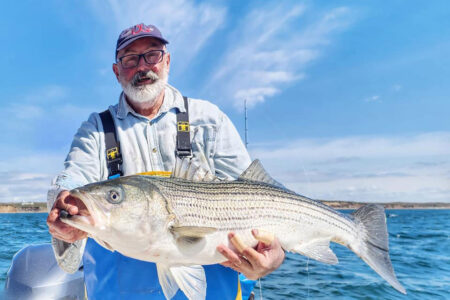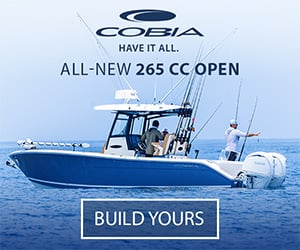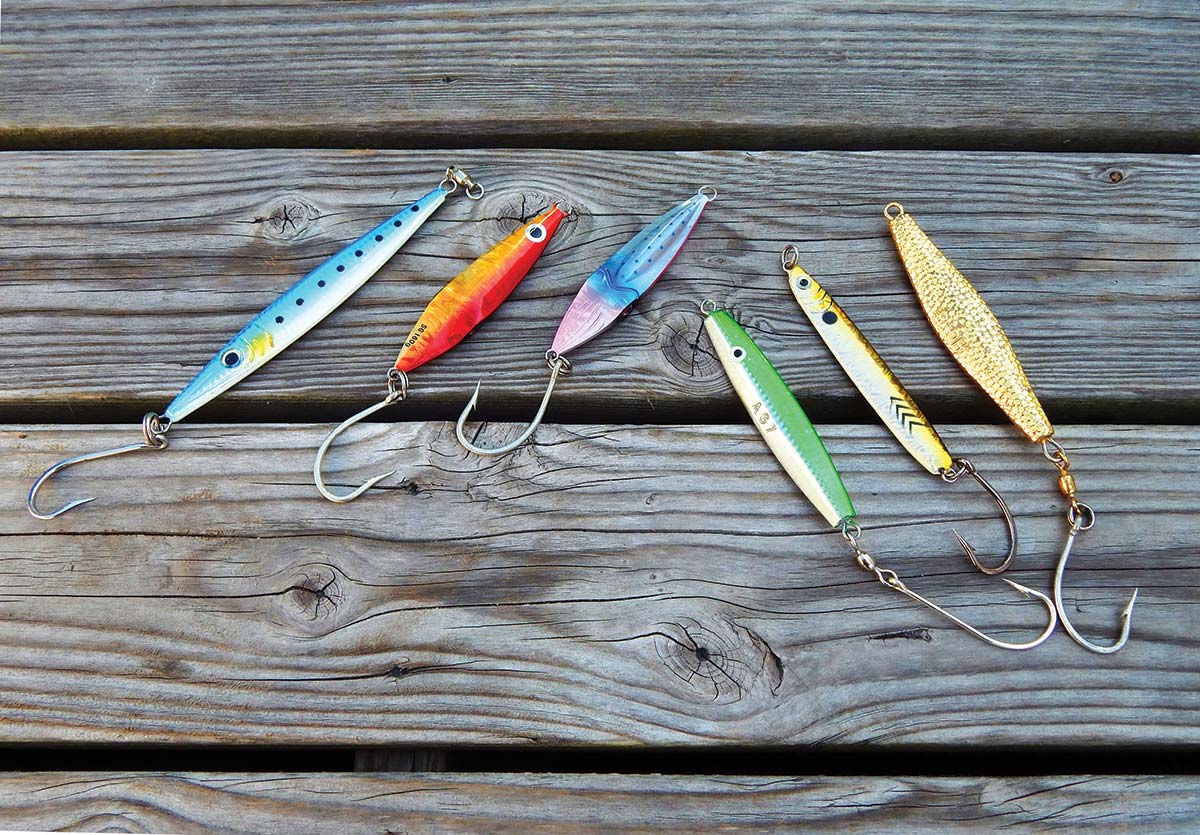
Each year is different and you have to read the signs to determine where and when the striper migration is going to happen.
If you want to get your feet wet with stripers, but have had mixed results clam chumming, casting surface plugs or employing live bait earlier in the season at the usual spots in your home waters, October and November is your time to shine. The coastal striper migration typically revs into high gear during “Octoberfest” and it’s a perfect way to put a bow on the 2020 fishing season for you and the crew.
As an avid offshore angler and charter boat captain, I don’t spend a lot of time hunting down stripers from April-to-September. I’ve never been accused of getting my boat in early to celebrate the April 15th start of the striped bass season. Whatever striper action that I focus on during this timeline might be an occasional jigging session at the inlet or slinging a popper or bucktail underneath a flock of feeding gulls or terns. However, for the nine weeks between October 1st and the Thanksgiving weekend, I am a true believer and 80 percent of my piscatorial pursuits are dedicated to tracking down stripers during their annual late fall migration through New England, Long Island and New Jersey coastal areas.
Although the focus of my fishing efforts is the “quality light tackle experience,” few methods in the striper hunter’s arsenal can be more productive in terms of absolute quantitative numbers than jigging them along the beach and near coastal areas during the last few months of the season. Many millions of schoolie and mid-sized stripers transit from coastal areas up north and gather in massive schools to journey down to their wintering grounds. If you are a rod-bending junkie, this is the time of the season to make it happen, with the potential for non-stop action on migrating schools of stripers. Essentially, it’s a “last hurrah” before you have to pull your boat for the winter and have some pleasant memories to carry you though the holiday season and cold winter months until the dawn of the 2021 season.
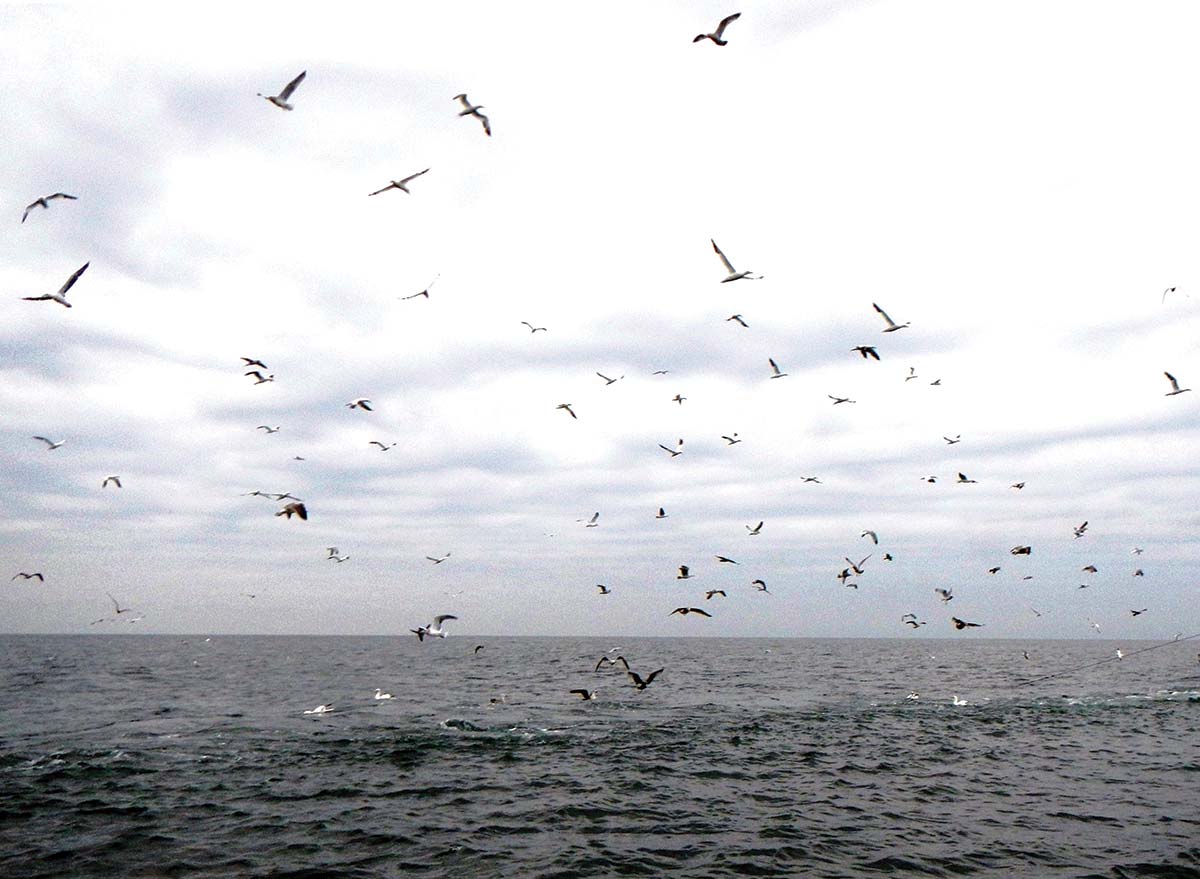
When And Where
The answer to this question is usually a moving target. The initial migration movements might start the first week of October, but the middle of the month is the norm. Passing alphabet storm systems, prevailing winds (north winds will really accelerate the striper migration) and ambient air and sea temperatures all contribute to the equation. According to my trip logs, I’ve caught copious amounts of migrating strips in water temps ranging from a high of 60-degrees down to a low of 49-degrees. Each year is different and you will know that the striper migration has kicked into high gear when the party boats in your area start switching over from wreck and reefs trips to jigging for stripers.
Cape Cod, the Islands (Martha’s Vineyard, Nantucket, Noman’s Land and Block), Fishers Island, Plum Island, Big Gull and Little Gull, Plum Gut, the Race, the Sluiceway and Montauk Point are some of the hotspots for the initial migration movements. At times the larger fish will lead the migration south, to be followed by swarms of juvenile fish in the following weeks – and sometimes they don’t. There are years when the big stripers cut across the open ocean waters from Montauk Point down to Cape May, NJ, bypassing the near coastal areas altogether. It depends on what estuary system they call home for the winter.
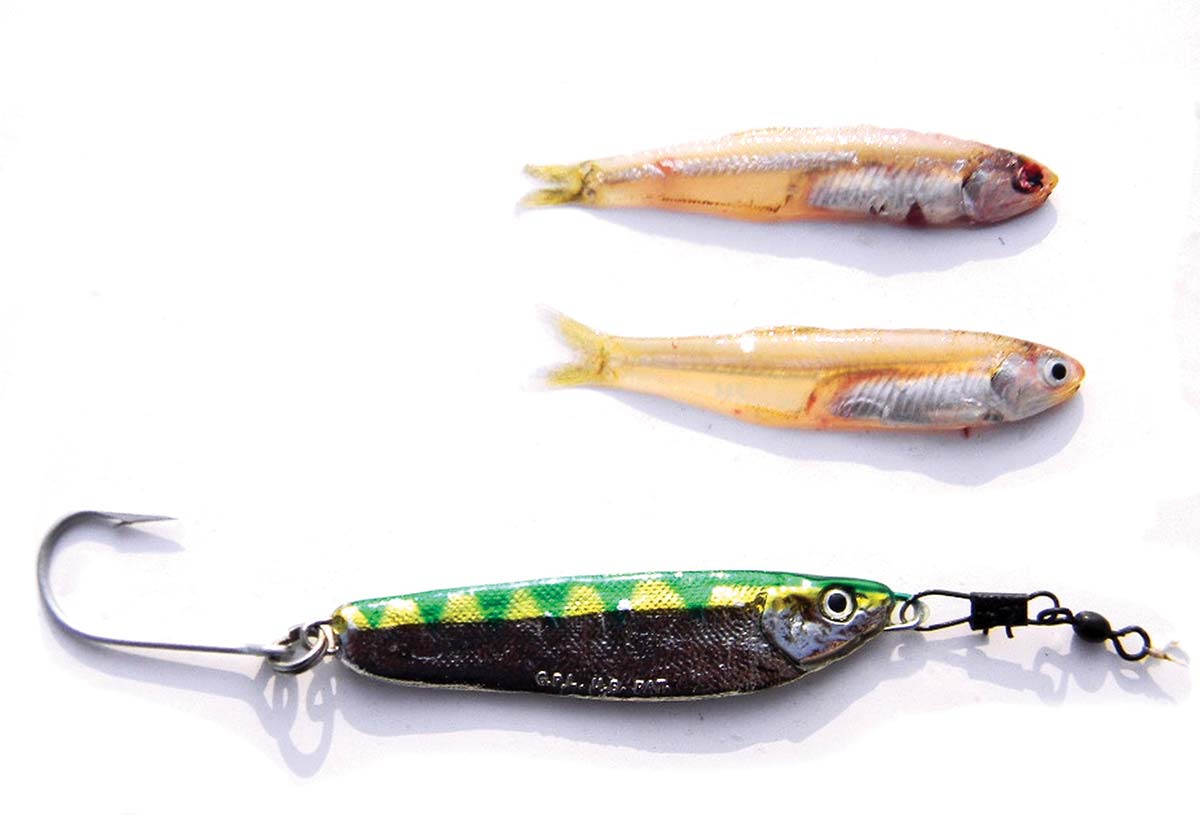
Each year is different and you have to read the signs to determine where and when the striper migration is going to happen. The Fisherman’s weekly video reports are a good place to start, but having a reliable network of fellow striper aficionados to call you with up-to-the minute reports is the best “real time” method of knowing where and when the action is taking place. Once the stripers start heading south and west, the northern shoreline of Long Island and the south shore of Connecticut start to percolate after the striper schools split up near Montauk Point. Some of the massive pods will head west into Long Island Sound while others take the opposite tack and cruise west along the Island’s South Shore. The remnants of the striper schools that don’t turn north into the Hudson will continue south down the Jersey shore, making them available to Garden State anglers. Whatever fish don’t turn northwest into the Delaware Bay estuary system will continue the southern migration process past DelMarVa’s eastern shore and will turn into their final wintering destination in the Chesapeake or deep waters off Virginia and North Carolina. Don’t be shocked to see a variety of predators pursuing these schoolie stripers in shallow water, with gorilla blues, bluefin tuna, seals, makos and great white sharks on this list of potential diners. I have caught many an early fall mako or thresher with a fresh schoolie striper in its belly, so be advised.
Tackle For The Task
Tackle continues to evolve for the fall striper jigging fishery and gear has been getting smaller, lighter, stronger and more easy to use than ever before. Sure, you can catch these schoolies and occasional 20 to 30 pounders with yesteryear’s favorites, but why would you? You just can’t beat the modern era equipment for its feel, reduced angler fatigue, ease-of-casting and fighting ability. With the trend towards using superbraid line, the frame and spool size of a reel required to hold 300-yards of 30 to 40-pound mono has been trimmed down to half of its original size. The advent of modern era drag materials, combined with lightweight aluminum reel frames, spools, precision-cut stainless steel gears and the increased use of silky smooth ball bearings, proves that bigger is not necessarily better and I use the mighty-mite reels to support the validity of this trend.
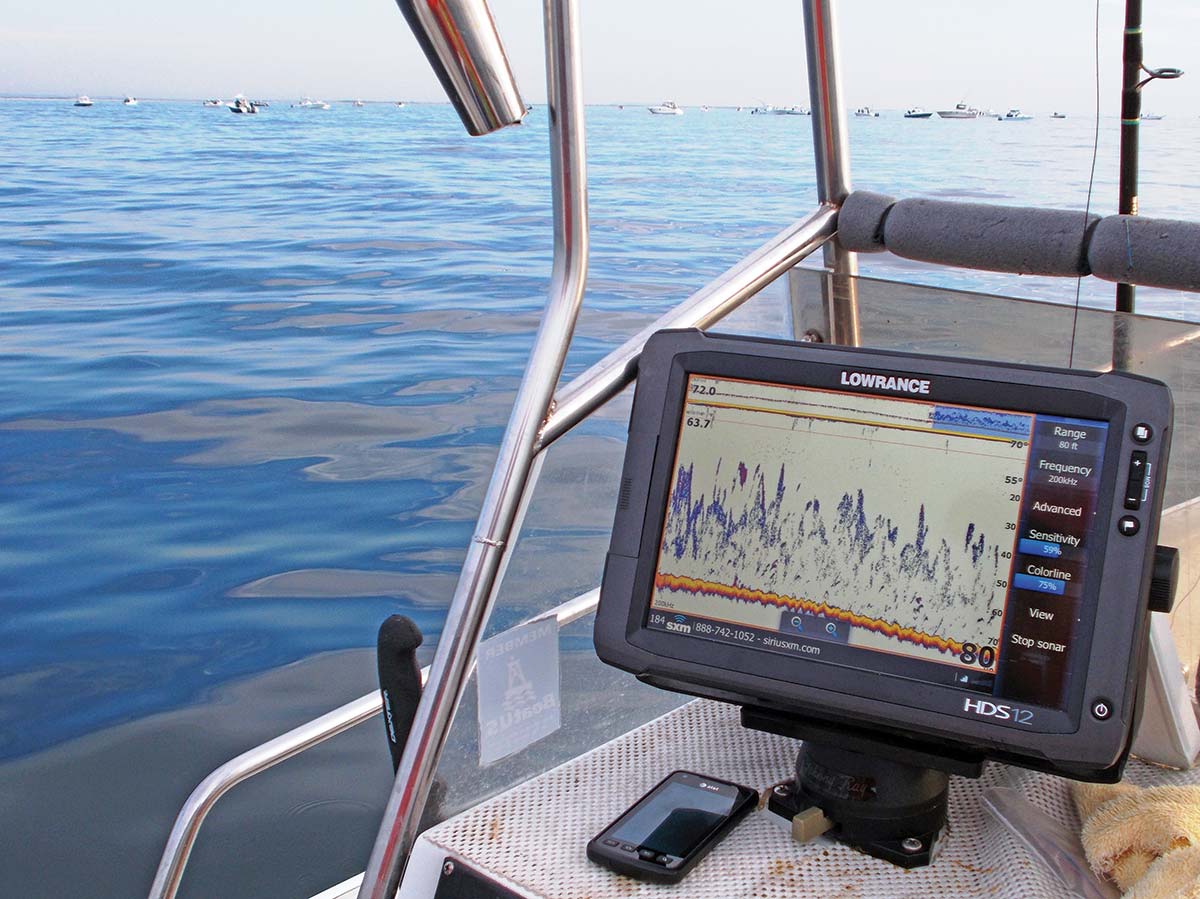
I prefer a 6.5-foot fast taper, M/MH action rod like the Penn Rampage, Shimano Tallus, Tsunami or OceanMax as my go-to sticks, mated to a Penn 975 International baitcaster or an Avet SX lever drag, spooled with high-vis yellow 30-pound TUF-Line or PowerPro superbraid. To this I add a topshot of 40-pound mono like Quattro Plus or Berkley ProSpec and we’re in business. I do have a snap-jigging spinning outfit that consists of a 6-foot Penn Battle rod connected to a 3500 Battle Reel, spooled with 15-pound green TUF-Line and a 30-pound shock leader. My other spinning outfit is an Okuma 4000-series Azores reel, attached to a 6.25-foot Tsunami M/H AirWave spinning rod. The conventional outfits will catch just about any striper that you hook and make it a fun experience in the process.
In The Fleet Or Fly Solo
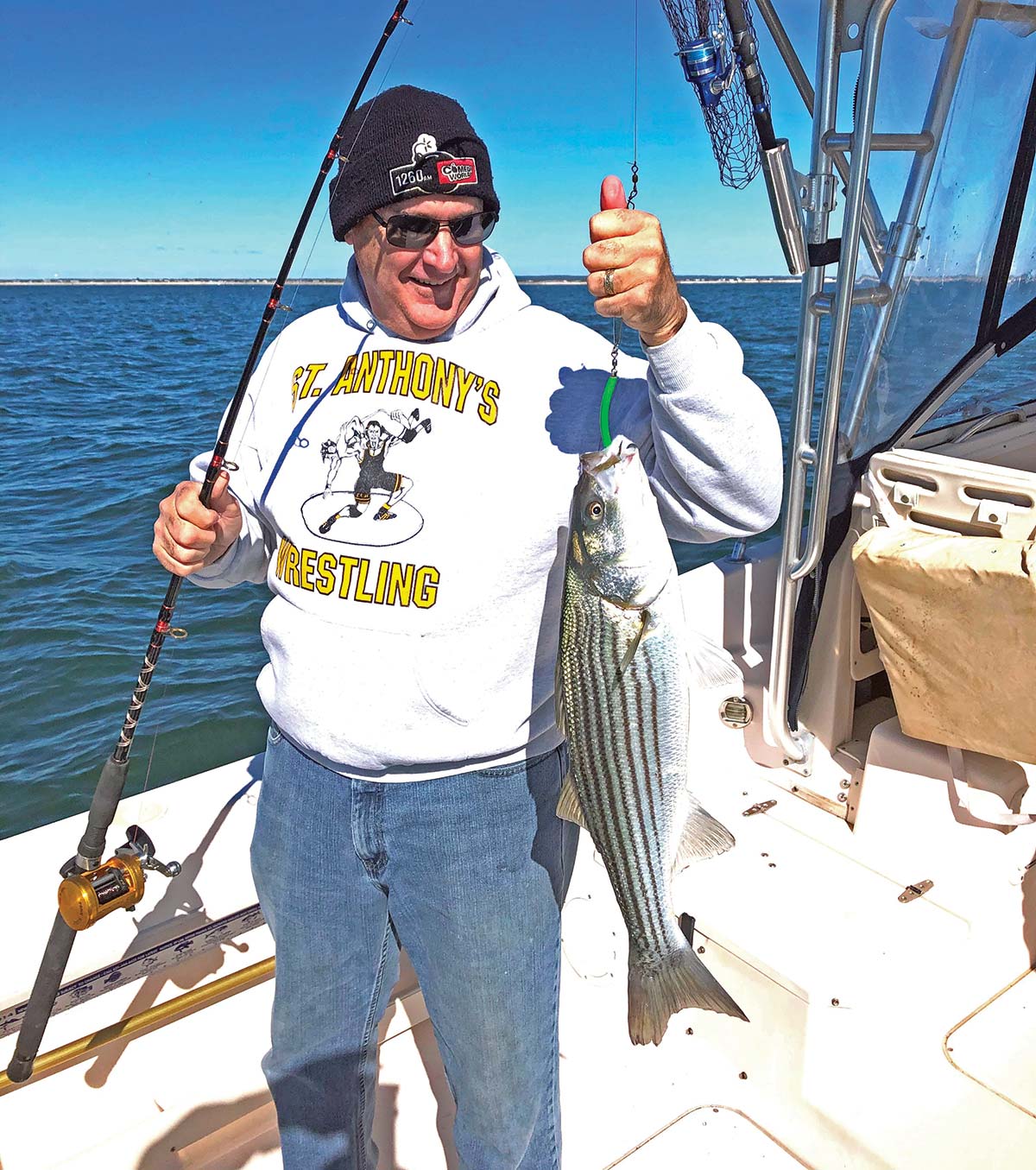
When you head out of your inlet or homeport in search of migrating fall stripers, you can be like a sheep and follow the fleet, especially the party and charter boats, or you can blaze your own trail. I’ve done both and prefer to fly solo most of the time, finding a secluded spot on the edge of the fleet to do my business. Lots of first time boat owners finally “looking to score” will inhabit the fleet, with unknowing or uncaring operators cutting across lines and raising havoc and creating ill will with their neighbors. I’ve been there and done that and try to avoid this at all costs to enhance the “positive karma” of the fishing experience and avoid conflict. There’s already too much of that in the real world and sport fishing is supposed to be an “escape.”
My favorite move is to ascertain the wind/current drift of the day, combined with the migration movements in my area (north to south or east to west depending on what part of the Striper Coast you call home), and then set up ahead of the fleet to get a first crack at who’s heading my way. I’ve had some of my best days embracing this approach, jigging 100 stripers and more in a 4 to 6-hour stretch. Your vessel’s echo sounder will tell you the story of where and when to start your fishing efforts, so pay attention and act accordingly. Repeat drifts over a certain area or lane might be required, especially if you are cutting across the preferred migration route diagonally, vertically, or at some obtuse angle.
Methods For The Madness
Once you are in the zone, as confirmed by red/orange/yellow clouds and bait balls on your color echo sounder, it’s time to get to work. If your screen is showing nothing at the moment, search nearby for frenzied gannets and gulls, surface commotion and nearby anglers flipping fish over the rails. Use your sounder to confirm the presence and depth of the passing schools of stripers and drop your jig down to that level or just below it and start a slow and steady retrieve, with minimal pause. If others around you are hooking up and you are striking out, rotate the jigs from your tackle box until you find the size, shape or color of the one that works. There are days when tube tails are mandatory to get a strike, especially when sand eels are present and the bait du jour. Other times, the most effective offering is a plain or gold-hammered jig that is the stripers’ favorite of the moment. Yet another technique is to get your jig into the stripers’ travel zone and then yo-yo it within a controlled range. This could be anywhere from right on the bottom to halfway up the water column. Some anglers prefer to hook up with migrating bass by throwing a popper or swimming plug at surface feeding schools. Practice whatever technique floats your boat, but don’t be hesitant to switch gears by using a different approach if one method is drawing a blank.
I prefer employing jig/teaser combinations for this fishery and going down this path, double-headers are a common occurrence. Go-to teasers can be epoxy-coated flies with sturdy saltwater hooks, a small bucktail jig like the SPRO Prime in ½ and ¾ ounce sizes, or as simple as some colorful feathers tied to a hook. The jig/teaser combo simulates a smaller fish chasing bait, which elicits predatory reaction strikes from even the most wary stripers. When rigging my jig/teaser combinations, I try to keep attachment hardware to a minimum and use a stainless steel quick clip/swivel combo to attach my jigs to the mono leader, along with a simple 6-inch dropper loop for my teaser, tied 15 to 18 inches above the jig on the mono leader or topshot. Snap-jig aficionados should have a blast with these migrating schoolie stripers, using their downsized 3000 series spinning outfits spooled with 15-lb braid and lightweight ¾-1½ ounce jigs.
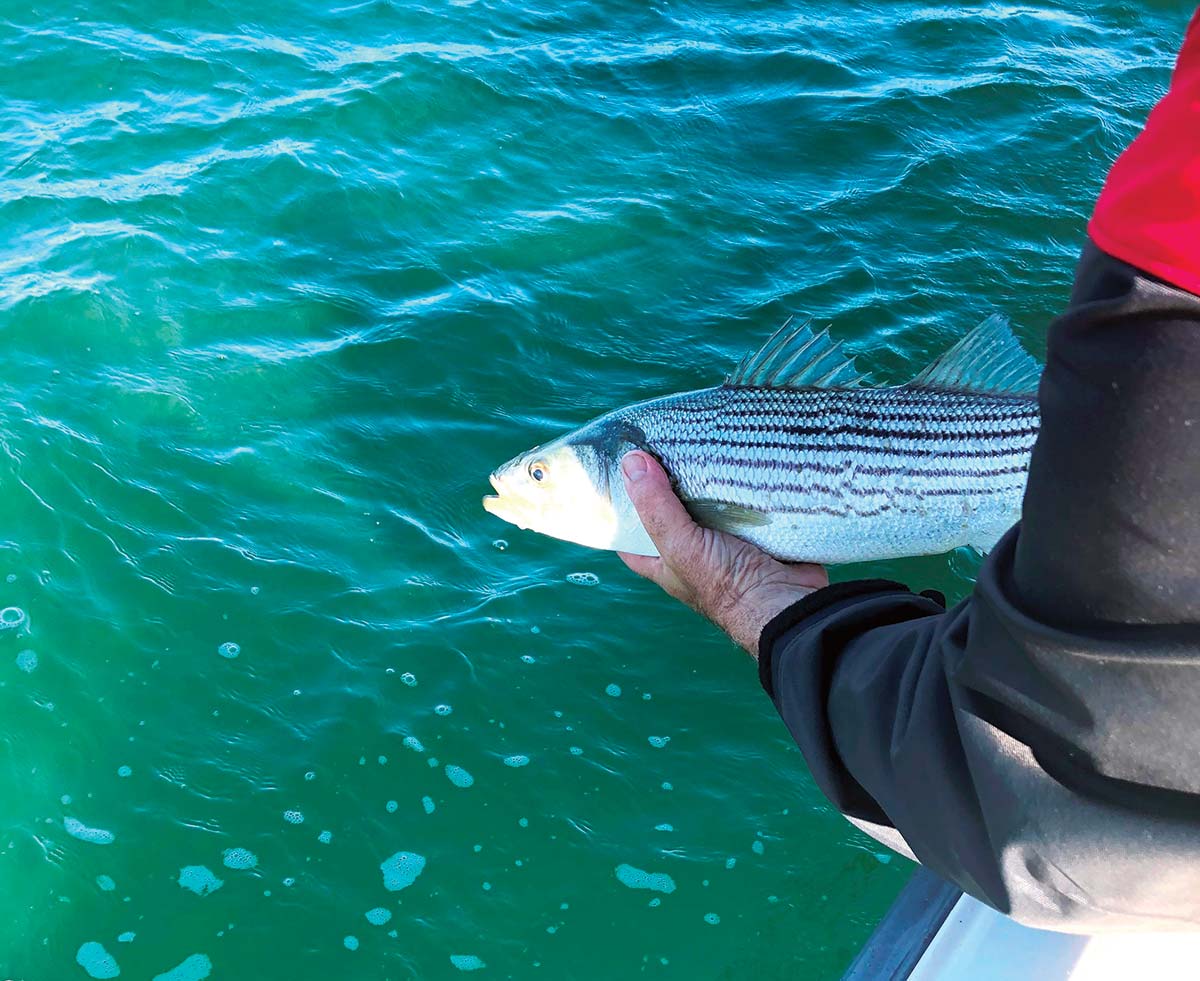
Stay In Your Lane
Most updated cartography for your chartplotter will indicate the three-mile limit that separates state/federal waters and the 12-mile limit that shows the demarcation line for federal/international waters. You are not allowed to possess stripers in federal waters, period. You must stay in your lane and not go past the three-mile limit with any stripers aboard. Technically, you should not be targeting migrating bass in federal waters outside of your state’s three-mile limit. If you happen to come across a striper on the wrong side of the line, it must be released right away, regardless if it’s a keeper or not. Those who ignore this nuance, do so at their own peril. The Coast Guard has been known to board boats with a high degree of frequency to do a “safety check” and to see if you possess any stripers outside of the three-mile limit. Just because you can’t see the Coasties where you are fishing doesn’t mean that they are not watching you. They have been known to employ drones on unsuspecting anglers who ignore bag limits, size limits and fishing on the wrong side of the street and they will find you and fine you accordingly, so be advised.
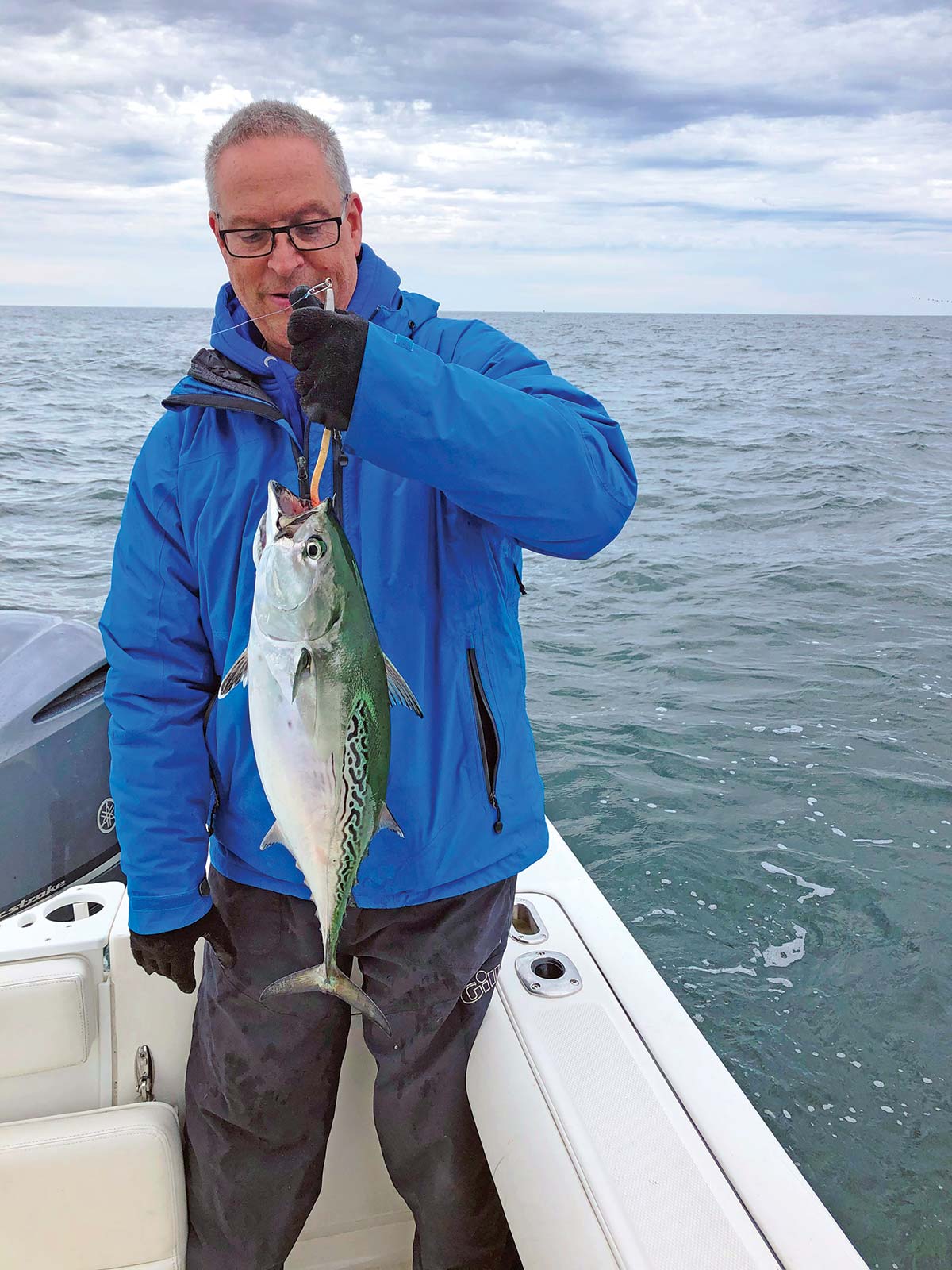
Depending on the size of your catch, you can choose to either net the stripers or just swing them into the boat. It’s best to minimize any hard knocks, like bouncing them on the cockpit sole or having a collision with the T-Top/Hardtop legs or any other hard object that can bruise or injure the fish. Remember, these are mostly schoolie-sized fish and the theme is to save them for the future, so they require some TLC when removing the hooks. Once it’s over the rail, if possible, grab the striper by the lower lip, put your rod in a nearby rod holder (not on the deck where other crew members can step on it), and remove the hook as gently as possible. Take a quick photo if you must and then gently release the bass headfirst back into the briny.
Some interesting bycatch to the schoolie stripers that you are targeting are oversized Atlantic bonito, false albacore, scad/chub mackerel, chopper bluefish, Spanish mackerel and bluefin tuna. These can be identified on your screen as inverted vee-shaped red/orange marks that are positioned away from the swarms of stripers, typically above them, but at times below the massive schools of migrating fish. You never know what might pop up during your coastal jigging excursions. If you come up with half of a striper, it’s usually a sign that makos have joined the party.
The October/November fall striper migration is one of my favorite times of the season and a jigging angler’s paradise. You don’t have to travel too far off the beach to get in on the action, but you might have to travel 30 to 40 miles down the beach from your inlet to find it. Listen to the VHF to hear who’s doing what and where and be safe out there.



